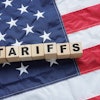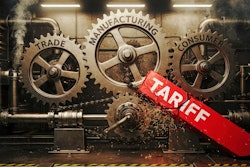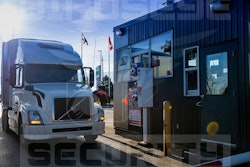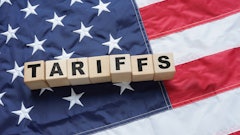
Foreign Trade Zones (FTZs) have become an indispensable tool for companies navigating the complexities of global trade. These designated areas within the United States offer unique advantages by allowing businesses to import goods without immediately paying duties. As the global tariff environment becomes increasingly chaotic and unpredictable, FTZs provide a strategic mechanism for managing costs, enhancing supply chain efficiency and mitigating tariff risks.
The renewed interest in FTZs
FTZs have seen a notable resurgence as businesses navigate the intricate landscape of global trade. Established in the United States in the 1930s, FTZs offer a strategic advantage by allowing companies to import goods without immediately incurring duties.
The 2023 Annual Report of the Foreign-Trade Zones Board to Congress underscores this growing interest, revealing that FTZs received nearly $949 billion in shipments, with production operations constituting 62% of this activity. Over 550,000 individuals are employed across 1,300 active FTZ operations, reflecting their significant impact on the U.S. economy.
FTZ staff cases are also surging with almost 250 cases in 2025, projecting well over 400 for the year, an 80%-plus increase over last year.
A key trend is the growing integration of domestic inputs within FTZs, with 68% of merchandise reflecting domestic status. This highlights how FTZs strategically combine U.S.-sourced and foreign components to boost operational efficiency. The strong reliance on domestic inputs also underscores the FTZ program’s positive influence on the U.S. supply chain, reinforcing American industrial strength and contributing to broader economic prosperity. Industries such as pharmaceuticals, energy, automotive, electronics, and machinery/equipment are leading the charge in leveraging FTZ benefits. With exports reaching nearly $149 billion, FTZs play a pivotal role in bolstering U.S. trade competitiveness and promoting current U.S. trade policy.
The flexibility offered by FTZs in deferring customs duties until goods enter the U.S. market significantly aids cash flow management, allowing businesses to focus on growth and innovation. As companies continue to confront an unpredictable trade environment, FTZs stand out as a critical tool for maintaining operational stability and financial health, effectively positioning themselves for sustained success in the dynamic global marketplace.
Strategic benefits of FTZ participation
Participating in the FTZ program offers a myriad of advantages. One of the primary benefits is the exemption from duties on goods that are imported into an FTZ and later exported. This exemption can result in substantial cost savings for companies engaged in international trade. Additionally, businesses can defer customs payments, paying duties only when products are moved from the FTZ into the U.S. market, which enhances cash flow and financial planning.
In certain manufacturing scenarios, FTZs also allow companies to benefit from the inverted tariff structure. If a finished product carries a lower duty rate than its imported components, manufacturing within an FTZ can result in duty savings. Furthermore, businesses can consolidate shipments within FTZs, reducing Merchandise Processing Fees (MPF) and customs brokerage fees. With direct delivery approval, shipments can go directly to FTZ facilities, minimizing port delays and reducing the risk of examinations or holds at the first U.S. port of arrival.
Goods awaiting regulatory approval or final labeling can remain in an FTZ, avoiding unnecessary delays. Additionally, goods passing through United States. FTZs can often retain preferential status under trade agreements, further optimizing costs. Qualifying inventory in FTZs may also be eligible for state and local property tax savings, offering additional financial benefits. Imported machinery or tools can be held duty-free in the zone until fully installed and used, providing yet another layer of cost efficiency.
Industries benefiting from FTZs
While any company involved in cross-border trade can benefit from FTZs, certain industries find them particularly advantageous. Sectors such as life sciences, pharmaceuticals, automotive, consumer electronics, heavy machinery, as well as oil and gas derive significant value from FTZs. These industries often face substantial import taxes and duties, engage in high-volume global trade operations and are continually looking to optimize their North American supply chain footprint.
FTZs are especially valuable for companies building or expanding U.S. manufacturing sites. By leveraging FTZs, these companies can reduce costs, streamline operations and enhance their supply chain resilience, allowing them to remain competitive in a rapidly changing global market.
Implementation and compliance considerations
Launching an FTZ is a strategic move that typically takes four to six months, although timelines may vary based on complexity and location. For companies seeking to capitalize on sites with existing FTZ designation, such as industrial parks or activated third-party logistics (3PL) facilities, the implementation timeline can be significantly reduced. The process involves several key steps, including conducting a feasibility assessment, obtaining local FTZ grantee sponsorship and filing applications with the FTZ Board. Developing operational and compliance procedures, often including software integration and activating with local U.S. customs are also crucial components of the implementation process.
Navigating the FTZ application and compliance process requires a thorough understanding of trade regulations and local port nuances. Companies must assess the feasibility and potential return on investment by evaluating cost savings and compliance risks across various facilities or trade lanes. Supporting the setup and activation process involves site selection, application drafting, documentation and coordination with U.S. Customs and Border Protection (CBP) to ensure compliance.
Maintaining proper controls, conducting mock audits, training staff, and updating procedures to meet evolving regulations are essential for ongoing compliance. By proactively managing these aspects, companies can maximize the benefits of FTZs while minimizing potential risks.
Long-term strategic advantages
FTZs present a strategic advantage for companies seeking to enhance their competitive edge in global trade. By optimizing logistics, reducing costs and streamlining operations, FTZs enable businesses to effectively navigate the complexities of international trade and position themselves for long-term success.
As companies continue to confront an unpredictable trade environment, FTZs offer a pathway to maintain operational stability and financial health. By integrating FTZ strategies into their broader risk management and compliance frameworks, organizations can safeguard their interests and thrive in a dynamic global marketplace.

















